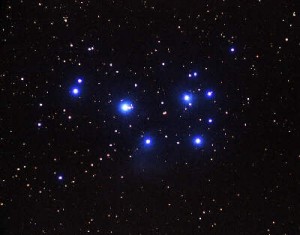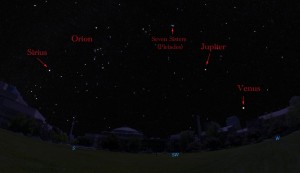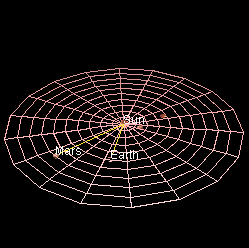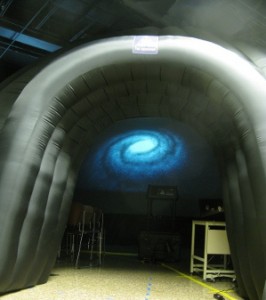On Friday, February 17, 2012 the night sky was picture perfect. No clouds, no haze and no moon.
From central Toronto, at 8:00pm – well before bedtime – the following stars, planets, constellations and star clusters were easily visible with the naked eye:
- The planets Venus and Jupiter
- The constellations Orion, Gemini, Taurus, Cassiopeia and more
- The brightest stars: Sirius, Aldebaran, Procyon, Castor and Pollux
- The Pleiades (Seven Sisters) and Hyades star clusters
And using a pair of binoculars:
- The Orion Nebula
- The Andromeda Galaxy (two million light years away)
- The Pleiades and Hyades star clusters (spectacular!)
- Jupiter’s four brightest moons
Although light pollution reduces the number of stars that can be seen from within the city, there is still a lot to see and discover in our night sky.
The Seven Sisters (Pleiades) Star Cluster looks like this through binoculars.



 Those asteroids are called
Those asteroids are called 


